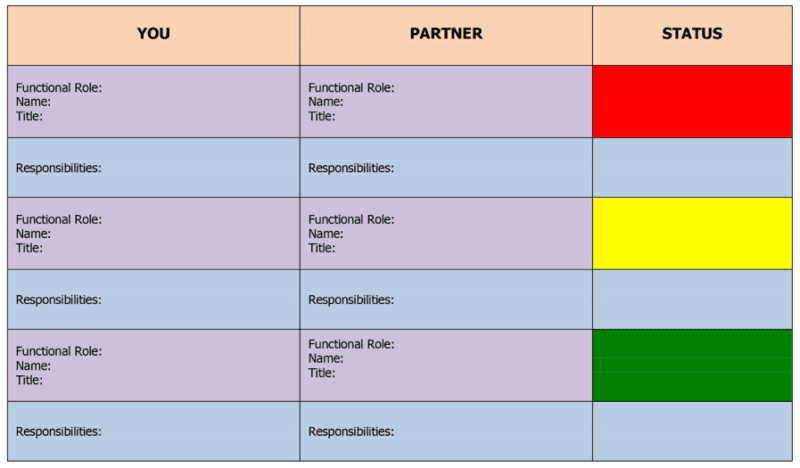Tip 10: Be Clear on the Roles and Responsibilities
Anyone who has been in a marriage or long-term relationship would know that maintaining such a relationship takes a lot of work. Even if the partners involved in the relationship have been together for a number of years, there will always be some kinks that need smoothing over. If those kinks are left as they are, they will become a source of conflict later on.
Business relationships are the same. Sadly, they are often taken for granted. We expect relationships to run by themselves without any real need for management, but successful relationships always require hard work regardless of the type of relationship they may be. Supplier-customer, strategic alliance relationships – they all demand a lot attention, communication and effort to stay healthy.
There are many tools that can support you in managing your strategic relationships. One such tool is the functional mapping tool. It is a simple yet powerful tool that proves that “less is more” – it will help you identify and create clarity in the roles and responsibilities in both your own and your partner’s organizations.
The idea behind the tool is that you use it to map out the functional relationships between your organization and your partner’s organization. Functional mapping is based on the fact that organizations are different and, hence, your peer may be on a different organizational level than at first would be expected.
The obvious example for explaining this is the partnership between a large multinational and a small, local firm. The functional peer of the CEO of the local firm may very well be the general manager of a business unit in the multinational rather than its actual CEO.
The functional mapping tool will help you define day-to-day interactions, as well as map escalation paths where peers meet peers to resolve issues or guide strategy for the alliance. It’s highly recommended that you do this mapping in the preparation phase, even before you launch the alliance. You don’t want to find out who the right peer is only in the middle of a crisis that requires escalation!
The model you can use for your functional mapping tool can be quite simple, like in the table below. You map your people to your partner’s people, describing their functional role, names, titles and responsibilities in the relationship. The third column in the table is often the most interesting one. The easy color-coding of red, yellow and green in this status column is akin to providing a status traffic light in your partnership.

Red, for instance, can mean that the two people are identified but have never met. What makes this color interesting in the context of the functional mapping tool is when you discuss the mapping in your own organization and an executive sees a red mark behind their name, they will immediately have their attention. In general, nobody likes a red mark behind his or her name. They will want to do something about it immediately.
On the other hand, the yellow color in the model can mean that the two people identified know of each other and have perhaps met a few times, but there is no working relationship between them. Meanwhile, green is good and means there is already a strong working relationship and a high level of trust between the two peers.
The functional mapping tool is a highly underrated tool because it seems that few organizations actually use it. That’s why it almost always comes as a surprise whenever this tool pops up as a topic for discussion in workshops. It’s really recommended that you use the functional mapping tool and that you fill it up right during the preparation phase, before you launch the alliance.
Define the roles within your partnership using a functional mapping tool so you’d be clear with who is responsible for what and who coordinates with whom.
I am publishing my ebook “25 tips for successful Partnerships and Alliances” in parts here on my website. Every other week a tip from the book will be shared, in the weeks in between I will publish my regular column. If you prefer to read the tips in the ebook faster rather than wait a full year then click here to purchase your own copy of the book.